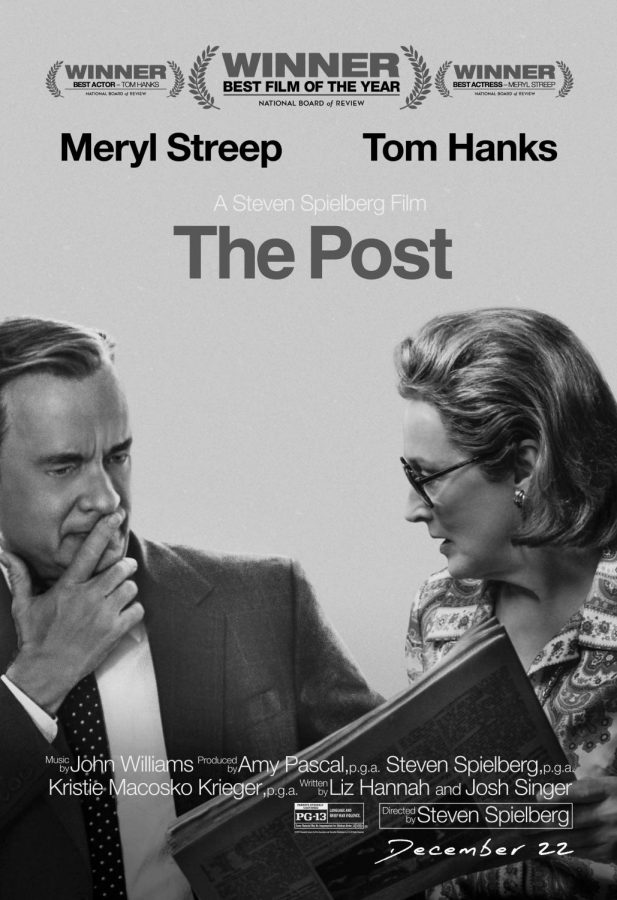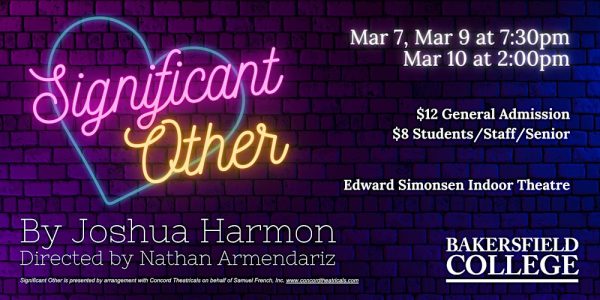“The Post” delivers realistic portrayal of those who protected free speech
February 12, 2018
Meryl Streep and Tom Hanks star side-by-side in “The Post,” a one- hour-and-fifty-five-minute.
film packed full of drama and suspense, by director, producer, and screenwriter Steven Spielberg, who is well-known for adapting true stories to film.
Spielberg’s film focused on how leaked government documents during the Nixon administration prompted an attempted cover-up of the truth. Through a series of demands and court injunctions brought against the New York Times and the Washington Post, both newspapers were under fire and refused to comply with government requests to cease printing the classified document’s contents which had been shared by an informant.
The film, which is based upon a true story about Katharine Graham, owner of the Washington Post newspaper, is played by Streep. Challenging the conventional wisdom of the time, she took a calculated risk to protect free speech, during an era rife with sexism, internal conflicts, power, and government secrecy. Hanks plays a supporting role as Graham’s Executive Editor, Ben Bradlee, who stands firmly with Graham in her decisions and even at some points in the film, forces her to make a choice. The future of free press stems back to this crucial moment in history, where the viewer is left to wonder what will it cost to print the truth when the world is watching.
The film has a strong believability factor to it: That’s because the actors that Spielberg chose to perform these huge roles, worked amazingly well together, merging their onscreen characters with a congruent depiction of people that these events portrayed. Not only that, but Spielberg who is keen enough to know just how to exploit the viewer senses, does eerily so, with scenes, props, locations, speech, mannerisms and behaviors that remain analogous to the 1970s era, from which the story was fashioned. The ability to do that, permits the viewer to be taken back to a time when only experiencing it, can give an idea of what a radical shift in the perception of governmental rights and powers, can accomplish. Without the defiance of the corrupted power, first amendment rights for journalists and all people are in jeopardy.
The high-paced tempo of scenes, packed with continual suspense, kept the viewer postponed in their assessment of what may or may not take place, especially for those generations who were either too young or didn’t exist during a time when a big slice of controversial history was being served up.
The key scenes which set a fiery tempo in motion: the hotel scene when the Pentagon Papers were handed over, when the reporters were busily reading thousands of pages so that they might glean the truth to beat a print deadline, Grahams house packed with a team of lawyers and respected council who attempted to dissuade her from going to print, the accusation of treason and the threat of prison, the Washington Post printers who stood by the phone waiting for their signal to roll with the press, and when the reporters gathered around the television to hear the verdict which would decide the fates of the New York Times, Washington Post and free speech for the country.
My final analysis is that while the film briefly felt just a bit incoherent at the beginning, because there were so many scenes packed within the first 20 minutes that it was hard to know who was doing what and why, nonetheless it was a very enlightening film about how politics, paper and people change the course of history. After that, I found the consistency of pace, storytelling, and drama pulled me effortlessly from scene-to-scene. Spielberg’s task as a director is to tell a story that draws the audience in as though it is their own personal experience, and this film accomplishes that. It’s as close to realism as one can get, without having been present.









